1. Cross
1.1. Collaboration
1.1.1. Chat
1.1.2. Messaging
1.2. Documentation
1.2.1. Product
1.2.1.1. Languages
1.2.1.2. Amount
1.2.1.3. Comprehensibility
1.2.1.4. Linguistic Quality
1.2.1.5. Examples
1.2.1.6. Guides / Tutorials
1.2.1.7. Screencasts
1.2.1.8. Installation
1.2.2. Processes
1.2.2.1. Export-Formats
1.2.2.2. Reportings
1.3. Exchange
1.3.1. Import
1.3.1.1. BPMN 2.0
1.3.1.2. BPMN 1.x
1.3.1.3. BPEL
1.3.1.4. JPDL
1.3.1.5. EPC/EPK
1.3.1.6. KSA
1.3.1.7. IBO
1.3.2. Export
1.3.2.1. Bitmaps
1.3.2.1.1. GIF
1.3.2.1.2. JPEG
1.3.2.1.3. PNG
1.3.2.1.4. Other
1.3.2.2. Vector
1.3.2.2.1. SVG
1.3.2.2.2. EMF
1.3.2.2.3. PS
1.3.2.2.4. Other
1.3.2.3. Documentations
1.3.2.3.1. PDF
1.3.2.3.2. ODT
1.3.2.3.3. HTML
1.3.2.3.4. DOC
1.3.2.3.5. Other
1.3.2.4. Grafic
1.3.2.4.1. EPC/EPK
1.3.2.4.2. BPMN 1.x
1.3.2.5. BP-XML
1.3.2.5.1. XPDL
1.3.2.5.2. JPDL
1.3.2.5.3. BPEL
1.3.2.5.4. BPMN 2.0
1.3.3. Interface-Types
1.3.3.1. WSDL / SOAP
1.3.3.2. REST
1.3.3.3. JSON
1.3.3.4. XMLRPC
1.3.3.5. Pojo
1.3.3.6. Adhoc
1.3.4. Connectors
1.4. Quality
1.4.1. Continous Integration
1.4.2. Unit-Tests
1.4.3. Codemetric
1.4.3.1. LoC
1.4.3.2. Sqale
1.4.3.3. Coverage
1.4.3.4. Dupes
1.4.3.5. Scope
1.4.3.5.1. CodeGen
1.4.3.5.2. Product
1.5. Repository
1.5.1. Services
1.5.2. Processes
1.5.3. Artifacts
1.5.4. Versioning
1.5.5. Registry
1.5.5.1. UDDI
1.5.5.2. LDAP
1.5.5.3. Other
1.5.5.4. ebXML
1.5.5.5. JAXR
1.5.6. Rules
1.5.7. Pattern
1.5.8. How to Reuse
1.6. Usermanagement
1.6.1. Roles / Groups
1.6.2. LDAP
1.6.3. OpenID
2. Infrastructure
2.1. Prerequirements
2.1.1. Database
2.1.2. AppServer
2.1.3. OS
2.1.4. JDK
2.1.5. RAM / HD
2.1.6. Other runtime environments (Perl, Ruby...)
2.2. Installation
2.2.1. UA-/Script
2.2.2. GUI
2.2.3. Fallback
2.2.4. Versioning
2.2.5. Documentation
2.3. Scalibility
2.3.1. Cluster-Ready
2.3.2. VM-Ready
2.4. Hosting
2.4.1. SaaS
2.4.2. PaaS
2.5. Maintainance
2.5.1. Versioning
2.5.1.1. Update-Support
2.5.1.2. Process
2.5.1.3. Downtime
2.5.2. Housekeeping
3. Common
3.1. Availibility
3.1.1. Free
3.1.2. Demo
3.1.3. Opensource
3.2. Basics
3.2.1. Author / Vendor
3.2.2. License
3.2.3. Office / Location
3.2.4. Product Name
3.3. Communication
3.3.1. Support
3.3.1.1. Hotline
3.3.1.2. Presales
3.3.1.3. Consultants
3.3.1.4. Online-Chats
3.3.1.5. Literature
3.3.2. Community
3.3.2.1. Size
3.3.2.2. Activity
3.3.2.3. Channels
3.3.2.3.1. Wiki
3.3.2.3.2. Twitter
3.3.2.3.3. Forum
3.3.2.3.4. Mailinglist
3.3.2.3.5. Newsgroup
3.3.2.3.6. Youtube
3.3.2.3.7. IRC
3.3.2.3.8. RSS
3.3.2.3.9. Blog
3.4. Cost-Modell
3.4.1. per User
3.4.2. per CPU
3.4.3. Anual
3.4.4. floating
3.5. Release
3.5.1. Version
3.5.2. Releasedate
4. Lifecycle
4.1. Analysis - 1
4.1.1. EMML
4.1.2. Mining
4.2. Design - 2
4.3. Development - 3
4.3.1. MDA
4.3.2. Branching / Merging
4.4. Rules Engineering - 4
4.4.1. Features
4.4.1.1. Integrated
4.4.1.2. Interfaced
4.4.1.3. RuleML
4.4.1.4. Maintaining
4.4.1.5. Visualisation
4.5. Simulation - 5
4.6. Deployment - 6
4.6.1. Features
4.6.1.1. Ant
4.6.1.2. ValueReplacements
4.7. Execution - 7
4.8. Monitoring - 8
4.8.1. Features
4.8.1.1. Lifecycle
4.8.1.2. Tracking-System
4.8.1.3. Operations
4.8.1.3.1. KPI
4.8.1.3.2. SLA
5. Customizing
5.1. Addons
5.1.1. By Author
5.1.2. By Third Parties
5.1.3. API
5.2. API
5.2.1. Documentation
5.2.2. Scope
5.2.3. Languages
5.2.3.1. Java
5.2.3.2. .Net
5.2.3.3. Python
5.2.3.4. Script
5.2.3.5. Other
5.3. Branding
5.4. Stencil-Sets
5.4.1. Basic
5.4.2. Full
5.4.3. Individual
5.5. Styleguides
5.6. View-Filter
5.7. Integration
5.7.1. Content Management Systems
5.7.2. Company Portals
6. Focus
6.1. BPMA
6.1.1. Catagory
6.1.1.1. Visio-Solution
6.1.1.2. BPMN Client-Server
6.1.1.3. BPMN Web (SaaS)
6.1.1.4. Allrounder
6.1.2. Checks
6.1.2.1. Guiding-Convention
6.1.2.2. Naming-Convention
6.1.2.3. Pattern-Convention
6.1.2.4. Syntax
6.1.3. Compliance
6.1.3.1. BPMN 2.0
6.1.3.1.1. Missings
6.1.3.1.2. Additions
6.1.3.2. Regulators / Standards
6.1.3.2.1. SoX
6.1.3.2.2. ISO 9001
6.1.3.2.3. Other
6.1.4. GUI
6.1.4.1. Usability
6.1.4.2. Language
6.1.5. Modell-Suport
6.1.5.1. UML
6.1.5.2. SysML
6.1.6. Pattern
6.2. BPMS
6.2.1. Category
6.2.1.1. Embedded BPM
6.2.1.2. Mobile-App
6.2.1.3. Complete
6.2.1.3.1. Client.Server
6.2.1.3.2. Web (PaaS)
6.2.1.4. Component
6.2.1.4.1. ESB
6.2.1.4.2. Monitoring
6.2.1.4.3. Service-Registry
6.2.1.4.4. Rules-Engine
6.2.1.4.5. Process Engine
6.2.1.4.6. Process-Mining
6.2.1.4.7. Test-Tool
6.2.2. Roundtripping
6.2.3. Security
6.2.4. Transaction

